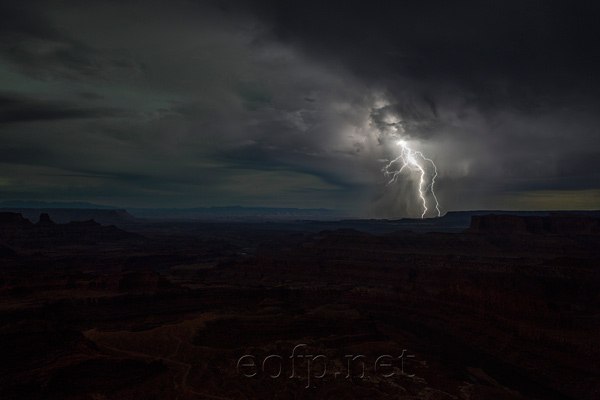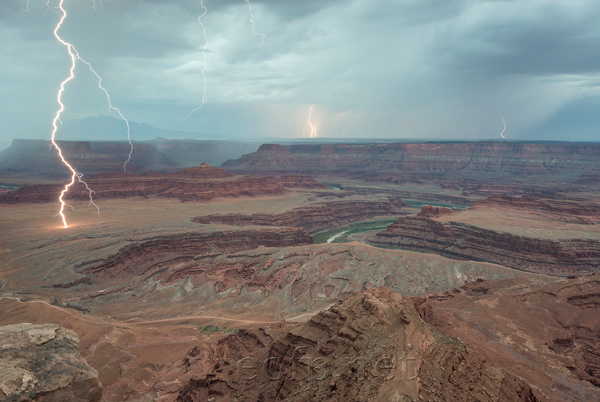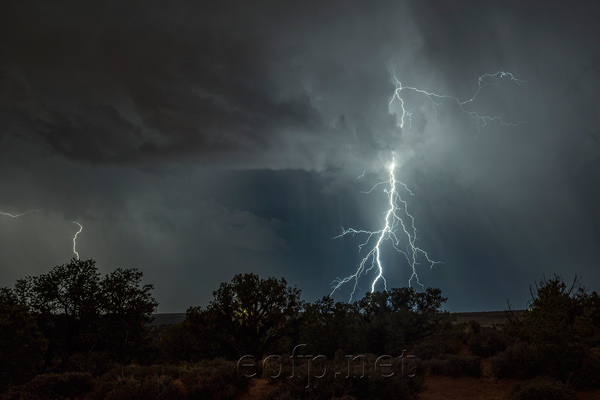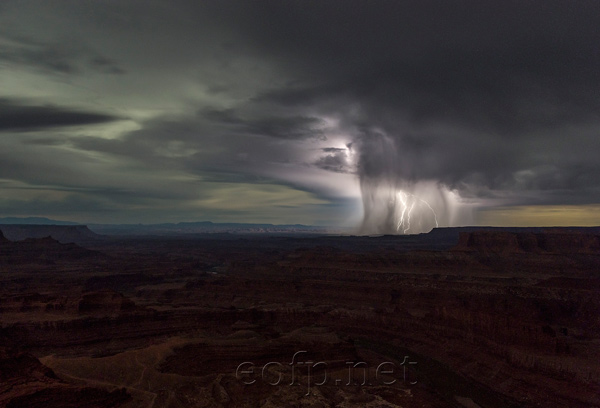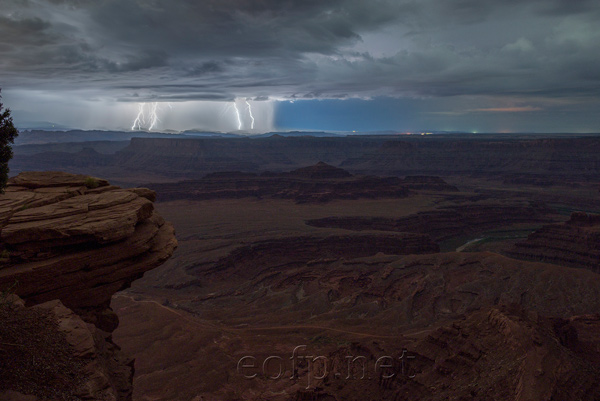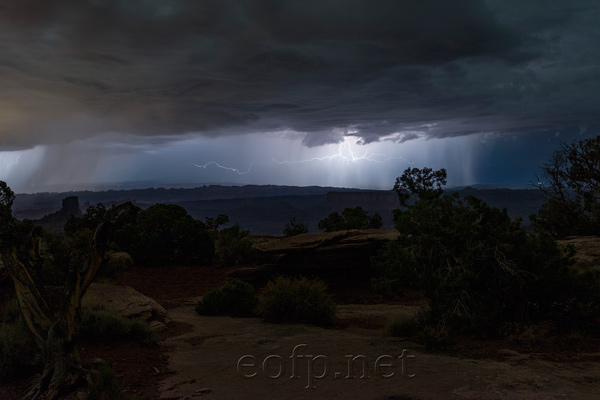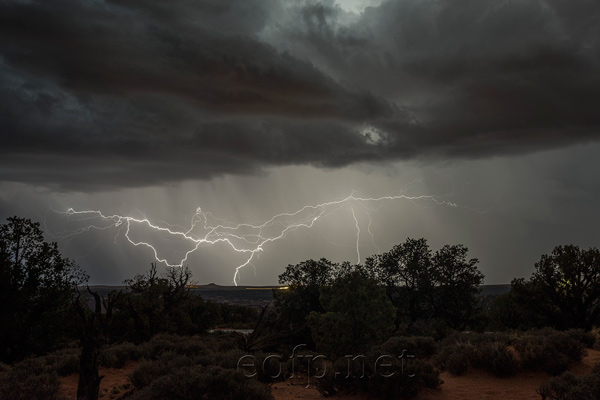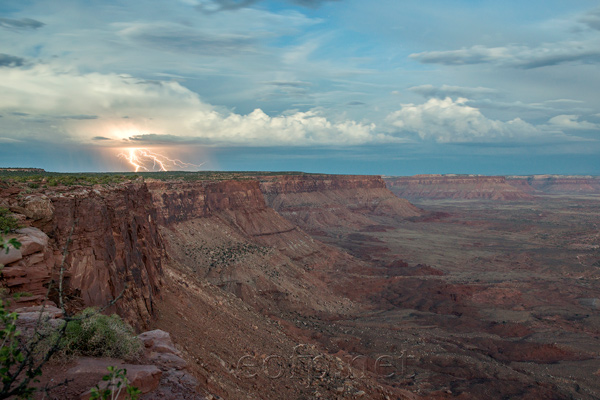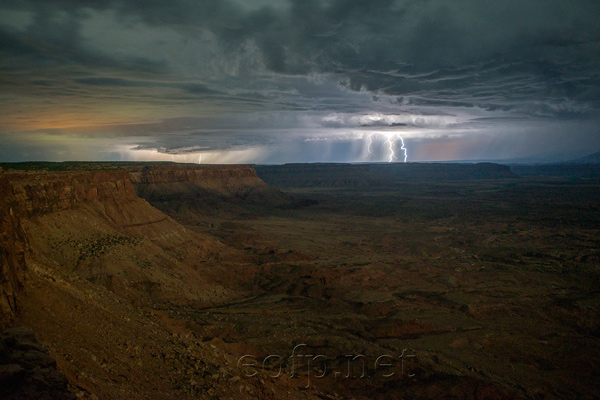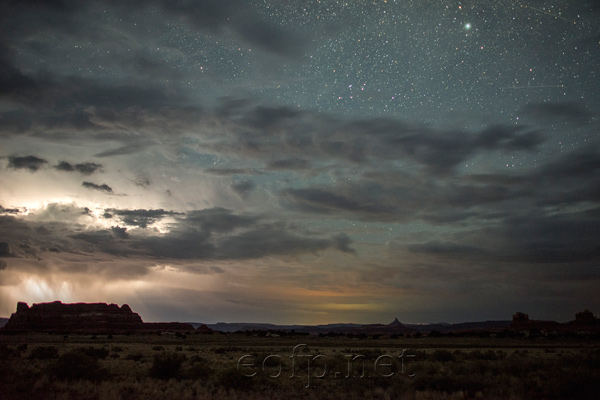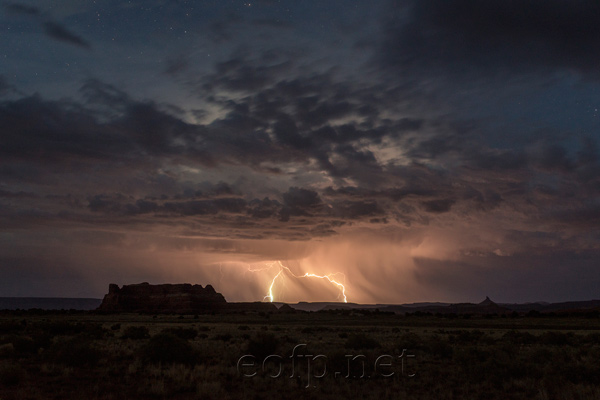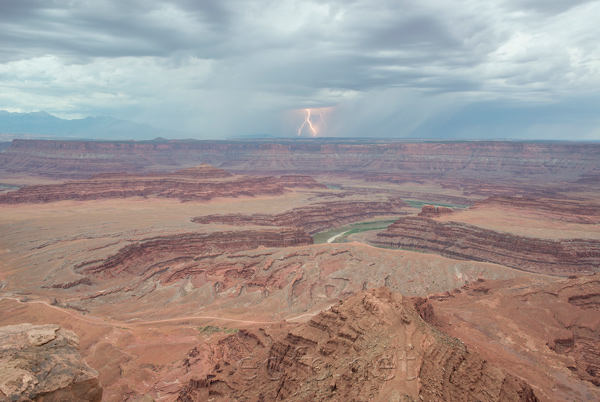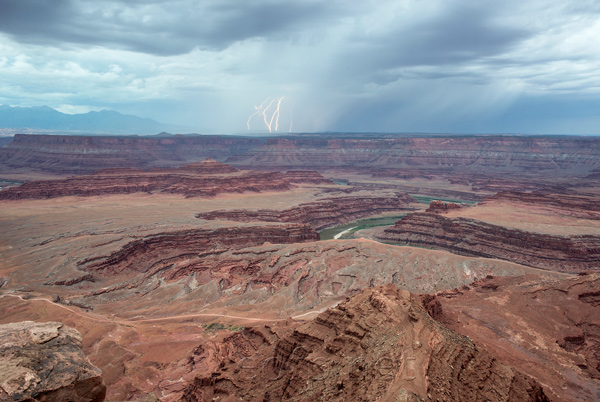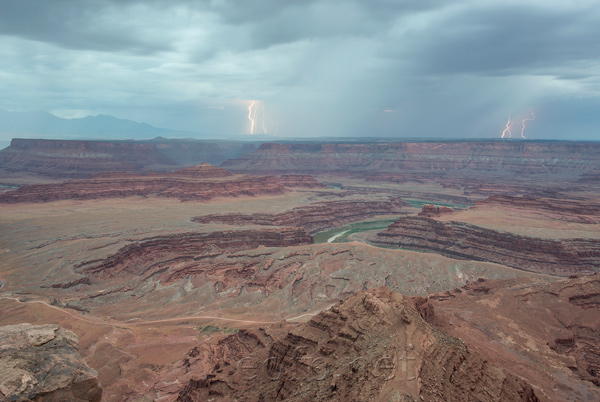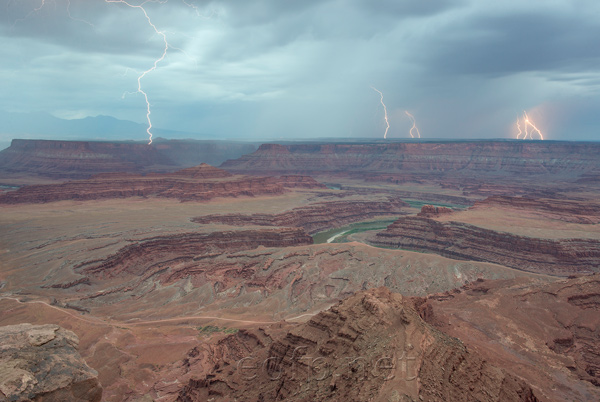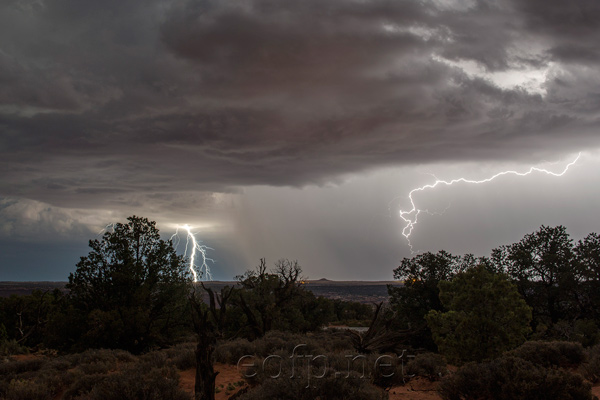6/6/2014
Photographing Lighting; Dead Horse Point State Park, Utah
Dead Horse Point, Utah
Incredible lightning storms form over the desert Southwest during the monsoon season. This is usually from July to August but is unpredictable. Some years there are many storms and some years there are few. I lucked into several nights of storms in the summer of 2013. I caught storms in Canyonlands National Park and at the Needles overlook but had the best luck at Dead Horse State Park. Storms tend to develop in the late afternoon and climax around or a little after sunset. In most cases they quickly diminish after it gets dark. This works out well because the best time to photograph lightning storms is in low light but not completely dark conditions.
Dead Horse Point, Utah
The key to photographing lightning is patience and a tripod. I was using a Nikon D600 with a 28mm f2.8 lens and a crap tripod. I probably shouldn't have been using such a wide angle lens. Next time I'm going to try a 50mm. But in some cases 28mm was perfect. The D600 is a great camera to work with because it has exceptionally good dynamic range. It's very difficult to correctly expose shots of lighting, so good dynamic range makes it sort of possible to save poorly exposed photos after the fact by lightening shadows and darkening highlights in Photoshop.
It's impossible to predict when lightning will strike. You will never be fast enough to hit the shutter button after seeing a lightning strike to capture an image of the lightning. The laws of physics pretty much rule that out. The solution is long exposures one after another. If you are using a 30 second exposure then any strike that happens during those 30 seconds will be recorded. This is how multiple strikes of lightning that happen at slightly different times are recorded on a single image. 30 seconds or a minute worth of lightning recorded can be much more dramatic than a single strike. But the more lightning strikes you capture the more you risk blowing out (over exposing) your image.
Dead Horse Point, Utah
I set the camera on a tripod aimed at the storm and hopefully a nice looking background. I then hit the remote release button over and over using a 30 second exposure or longer. 30 seconds happens to be the longest automatic shutter speed on the D600. In my opinion this is one of the worst limitations of the camera. Manually timing exposures is a pain but I did have to time many of these shots manually once it got so dark that I needed more than 30 seconds.
Dead Horse Point, Utah
Exposures are really hard to get right when photographing lightning. You need to use a low ISO and a high f stop or any lightning will completely blow out the image. These were mostly taken at f 11 and 100 ISO. If it's dark enough you'll need a very long exposure at those settings to expose the background/foreground properly. Photos of lightning in daylight conditions tend to be low contrast and don't look as dramatic as those taken at dusk or later. Sometimes so many lightning strikes will happen in the same area that the accumulated light will blow out the image- unless you manage to close the shutter fast enough and abandon your planned exposure. I tried to keep track of the number of strikes in a given area and would frequently have to close the shutter early to prevent having whole areas of the image blow out. In spite of this I still had several that blew out completely. Because I was more focused on exposing the lightning correctly, under exposing the foreground/background became a big problem. It's possible to lighten dark areas to a degree in Photoshop but they end up being really noisy. I'm sure I could have done more to reduce the noise in these pictures but in a lot of cases I think noise reduction makes photos look artificial and and am generally reluctant to use it. Or more likely I don't know how to use it correctly.
Dead Horse Point, Utah
Lightning is dangerous and kills people on a regular basis. During these storms a bolt of lightning hit a pit toilet and set it and the brush around it on fire. Lighting will strike unpredictably but will generally find the easiest path to ground which means it will strike the highest thing, connected to the ground, in a given area. Do not be that thing. If you are standing next to a tree, the tree is more likely to get struck than you. But the current flow is so extreme immediately around a lightning strike that if you are standing next to a tree that gets struck, you will get fried too or blinded and burned have ruptured eardrums. At the very least your camera will get fried. Cars are generally safe in lightning storms because the rubber wheels insulate the car from the ground. Cars are not always safe though especially if they are parked near potential paths to ground like trees or pit toilets. The great thing about photographing lightning in the Canyonlands and Southwest in general is that you can see so far away. Most of the storms in these photos were many miles from me. Most of them.
Dead Horse Point, Utah
Dead Horse Point, Utah
Dead Horse Point, Utah
Needles Overlook
Needles Overlook
Squaw Flat Campground, Canyonlands National Park, Utah
Squaw Flat Campground, Canyonlands National Park, Utah
Dead Horse Point, Utah
Dead Horse Point, Utah
Dead Horse Point, Utah
Dead Horse Point, Utah
Dead Horse Point, Utah
Dead Horse Point, Utah
All content on these pages Copyright Mark Hedlund 2012-2019. All rights reserved. Use in school projects and with links on social media is always okay. Please send me an email to request permission for any other use: hedlunch@yahoo.com Non-exclusive commercial publication rights for most photos is $25 per image.

